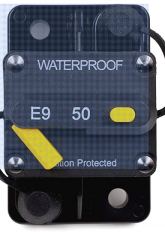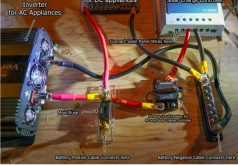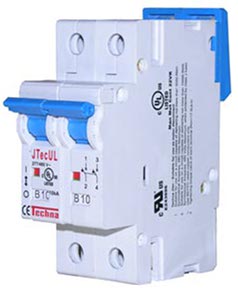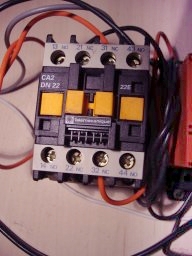What makes those cheap breakers different, and how would it matter do the cheap breakers function differently. Do they not heat and deform and trip like all breakers of this type?
Heat-deform-trip is thermal. That is used for moderate overloads, for instance 30A though a 20A breaker, which make take 10 minutes or so to trip. I've tested AC breakers that way with a couple space heaters.
When it trips, it pulls contacts apart. In the case of AC, any small arc is extinguished in 1/120th of a second or less when current flow drops to zero before reversing. If AC breaker used for DC, the distance between contacts may not be enough to stop the arc.
Most breakers also have a fast magnetic trip, activated around 5x rated current, e.g. 100A through a 20A breaker. I've also been testing those with my home-brew circuit breaker tester (current transformer and space heaters). Eventually I expect to be able to apply 375A continuous, 1kA to 1.2kA instantaneous, sufficient to test 200A main breakers.
Those are just overloads. What about a dead short? My AC main breaker is designed to successfully interrupt up to 22,000A (once), and the branch circuit breakers up to 10,000A. That is supposed to be sufficient for utility transformers in residential neighborhoods (winding resistance limits current.) In an industrial neighborhood, as much as 100,000A could be delivered to a short, and these circuit breakers would explode. A fuse with 100kA or 200kA would be needed. (I'm probably not going to build a tester for any of those currents; I'm just doing non-destructive tests.)
For DC applications, a battery bank can deliver several thousand amps. An automotive starting battery about 2000 or 3000A. My 400 Ah bank about 16,000A. While AC current can generally be interrupted in 120th of a second (with destruction of the breaker for high currents), DC can just keep on flowing. There are several ways to make a breaker function or DC, and one would be a magnetic field that causes the plasma to be pulled away from the contacts. So polarity would matter. Possibly, just the magnetic trip function also uses polarity in some DC breakers.

en.wikipedia.org

en.wikipedia.org
Midnight Solar has breakers with specified polarity. But what matters is the polarity of high fault currents rather than normal operating currents; the fault could be a backfeed from battery into charge controller.
https://forum.solar-electric.com/discussion/17866/midnite-breaker-polarity
There is a lot of technology and engineering that goes into these things.






